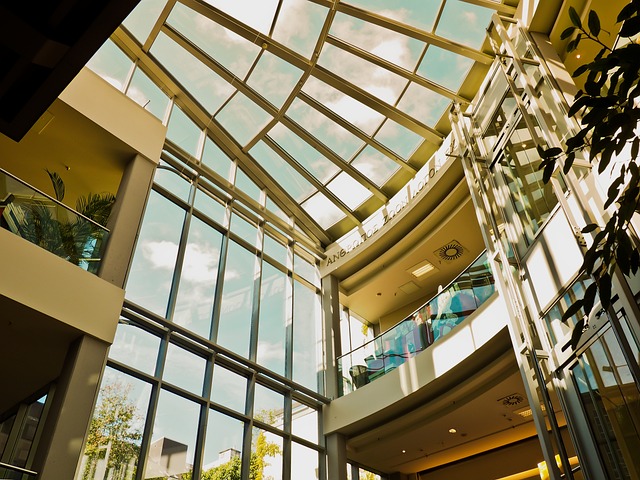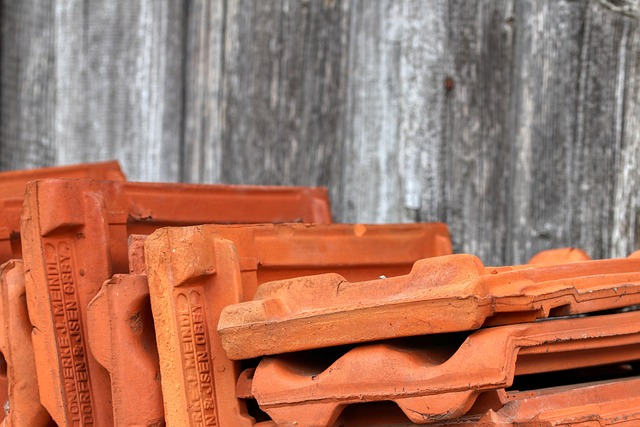Low slope roofing, popular for commercial buildings like warehouses, offers energy efficiency and modern aesthetics with gentle gradients (<20 degrees). Essential for prevention of water damage are effective roof drainage systems. Key materials include asphalt shingles, EPDM rubber membranes, and TPO sheets, each with unique benefits. Installation requires meticulous techniques and equipment, focusing on substrate preparation and creating a weatherproof barrier. Cost-effective and sustainable, these systems manage water runoff efficiently, enhancing structural stability and durability, ideal for regions with heavy snowfall or rainfall. Regular maintenance is crucial to prevent damage from leaks. Widely adopted in warehouses due to adaptability and functionality, low slope roofing provides flat surfaces suitable for diverse operational needs while integrating seamlessly with advanced drainage systems.
“Unleashing the potential of efficient, cost-effective, and durable protection for commercial spaces, this article delves into the world of low slope roofing. We explore the fundamentals, shedding light on its unique design and advantages in industrial settings. From popular materials to installation intricacies, we uncover the secrets behind successful implementation. Furthermore, we analyze benefits, challenges, and maintenance tips, offering a comprehensive guide to understanding and leveraging the power of low slope roofing systems.”
- Understanding Low Slope Roofing Basics
- Common Materials Used in Low Slope Roofs
- Installation Processes and Techniques
- Benefits of Shallow-Pitch Roofing Systems
- Challenges and Maintenance Considerations
- Popular Applications in Commercial Spaces
Understanding Low Slope Roofing Basics

Low slope roofing is a popular choice for commercial buildings, particularly warehouses and large-scale industrial spaces. This style of roofing differs from traditional sloped roof designs, featuring a gentle gradient instead of steep angles. The term ‘low slope’ typically refers to a pitch or angle of less than 20 degrees, making it significantly flatter compared to standard residential roofs.
These systems offer several advantages, such as improved energy efficiency due to reduced heat absorption and easier maintenance. In terms of design, low pitch roofs provide a sleek and modern aesthetic, which is aesthetically pleasing for commercial buildings. Additionally, effective roof drainage systems become crucial with this type of roofing, ensuring proper water runoff and preventing potential damage from water accumulation.
Common Materials Used in Low Slope Roofs

Low slope roofing systems, popular for their simplicity and effectiveness, often utilize a variety of materials to ensure durability and longevity in commercial settings like warehouses. Common choices include asphalt shingles, which are affordable and readily available, offering a straightforward solution for large, flat surfaces. Another prevalent option is EPDM (Ethylene Propylene Diene Monomer) rubber membranes, known for their superior resistance to punctures and extreme weather conditions, making them ideal for long-term use in commercial applications.
Additionally, TPO (Thermoplastic Olefin) sheets are gaining popularity due to their flexibility, ease of installation, and excellent sealants, which promote efficient roof drainage systems. These materials cater specifically to the low pitch roof design, providing a seamless finish that prevents water penetration. Their longevity and low maintenance requirements make them practical choices for large commercial spaces, ensuring protection from elements without complex sloped roof design structures.
Installation Processes and Techniques

The installation process for low slope roofing systems is a meticulous art, often involving specialized equipment and techniques tailored to this specific type of roof. These systems, characterized by their shallow pitch or near-flat surface, require careful precision during construction. The first step involves preparing the substrate, ensuring it’s clean, dry, and free from any debris. This foundation is crucial for the long-term integrity of the roof. After the substrate is ready, a protective layer, often in the form of a membrane, is applied to shield against moisture intrusion.
The actual roofing process entails arranging and securing flat or slightly sloped panels, known as low pitch roofs, onto the structure. These panels are designed to overlap each other, creating a seamless barrier against the elements. To enhance structural stability and facilitate efficient water drainage, various roof drainage systems are integrated into the design. This includes strategically placed gutters, downspouts, and drains, ensuring any rainwater is swiftly directed away from the building’s foundation. The sloped roof design, though subtle compared to traditional roofs, plays a vital role in maintaining this flow of water, preventing pooling, and mitigating potential damage over time.
Benefits of Shallow-Pitch Roofing Systems

Shallow-pitched roofing systems, often referred to as low slope roofing, offer a multitude of benefits for warehouses and large commercial spaces. One of the primary advantages is their cost-effectiveness. These systems are generally less expensive to install and maintain compared to traditional sloped roof designs. Additionally, they require fewer materials, making them a more sustainable and environmentally friendly option.
Low pitch roofs also provide excellent roof drainage systems, which is crucial for commercial buildings that receive significant snowfall or heavy rainfall. The gentle slope allows for efficient water runoff, preventing pooling and reducing the risk of leaks. This feature, combined with their durability and longevity, makes low slope roofing a practical choice for businesses seeking reliable and long-lasting protection for their structures.
Challenges and Maintenance Considerations

Low slope roofing systems, while popular for their simplicity and cost-effectiveness in large commercial spaces like warehouses, come with unique challenges that require careful consideration. These roofs, often characterized by a low pitch or near-flat design, demand meticulous maintenance to prevent water damage, a common issue due to the lack of proper sloped roof drainage systems. Regular inspections are crucial to identify and address potential problems early on, as even small leaks can lead to extensive interior damage over time.
Proper maintenance involves more than just repairing leaks; it encompasses ensuring the integrity of the roofing membrane, inspecting flashing around windows and doors, and managing vegetation growth that could obstruct drainage systems. Given the size and height of many commercial buildings, accessing these low pitch roofs for maintenance can be a challenge, necessitating specialized equipment and experienced technicians to safely navigate the structures and perform necessary tasks.
Popular Applications in Commercial Spaces

Low slope roofing systems are the go-to choice for many commercial spaces due to their versatility and functionality. Warehouses, in particular, often feature this type of roofing due to its ability to provide a flat surface suitable for various operational needs. From storage and distribution centers to large-scale manufacturing facilities, low pitch roofs offer efficient solutions for managing space and enhancing structural integrity.
Moreover, these systems integrate seamlessly with advanced roof drainage systems, ensuring optimal water management. This is especially crucial in regions with significant rainfall, where proper drainage prevents water damage and prolongs the lifespan of the roofing material. The sleek and simple sloped roof design contributes to a building’s overall aesthetic appeal while remaining practical and cost-effective for commercial property owners.
